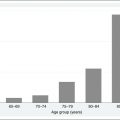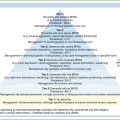Chapter 16 FUNCTIONAL ASSESSMENT
INTRODUCTION
When an older person becomes mentally impaired, their ability to self-care is an area that usually becomes compromised. It is what a person cannot do that often concerns older people and their carers. Therefore, assessment of an older person should include their functional ability. The presence of functional impairment can have serious consequences. For example, if a person is unable to shop and cook, or even feed themselves, their nutritional health status can be severely compromised, which in turn affects the functioning of other body systems. The treatment plan and decisions are also heavily influenced by a person’s functional ability.
FUNCTIONAL ASSESSMENT
Functional assessment is defined as:
… a method for describing abilities and activities in order to measure an individual’s use of the variety of skills included in performing the tasks necessary to daily living, vocational pursuits, social interactions, leisure activities, and other required behaviours (Granger 1984, cited in Dittmar 1997).
Functional decline in older people may be due to single or multiple factors. It can involve cognitive, emotional, physiological or anatomical structure or function. The decline may be temporary, permanent or progressive (Dittmar 1997). In older people with dementia, for example, their functioning could be impaired because of cognitive impairment and the decline will be progressive and permanent. Conversely, an older person with severe depression may be functionally declined because of apathy or withdrawal. In this situation, their functional status might be temporary because once they receive treatment for the depression, their functioning could improve. Indeed, functional ability is an outcome measure for the effectiveness of treatment and also an important determinant for permanent placement in a residential aged care facility (Burns et al 2004).
ACTIVITIES OF DAILY LIVING AND INSTRUMENTAL ACTIVITIES OF DAILY LIVING
At a basic level, assessment of a person’s functional ability involves activities of daily living (ADLs) and instrumental activities of daily living (IADLs). ADLs are basic self-care and self-maintenance skills. These include bathing, toileting, dressing, walking and the ability to transfer, for example, from a chair to a bed. IADLs are more complex, multifaceted tasks that require a reasonable amount of planning and organising. These skills enable the older person to function independently in the community, and include using the telephone, handling finances, using public transport and shopping (see Table 16.1).
Table 16.1 Important activities of daily living (ADL) and instrumental activities of daily living (IADL) skills
| ADLs (Harris et al 1996) | IADLs (Lawton 1988) |
|---|---|
| Walking inside | Using the telephone |
| Bed-to-chair transfers | Shopping |
| Getting on and off the toilet | Food preparation |
| Putting on and taking off shoes and socks | Housekeeping |
| Bathing | Laundry |
| Dressing | Mode of transportation |
| Continence (bladder and bowel) | Medication management |
| Eating | Handling finances |
| Mobility |
The Activities of Daily Living Scale
The Activities of Daily Living Scale (Katz et al 1963) is an extensively used scale for evaluating levels of severe physical disability, relevant mainly to people who are living in institutions and to older people. It is conceptually based on the biological model of human development, with the most complex functions being lost first. The six activities included in the index were found to lie in a hierarchical order. Katz further noted that, during rehabilitation, skills are regained in order of ascending complexity, in the same order that infants initially acquire them. These activities represent landmarks in the normal development of self-care.
Through observation and interview, each activity is assessed on a 3-point rating scale of the person’s ability to perform six activities (bathing, dressing, toileting, transferring, continence, feeding) unaided. The activities are rated as: (1) can be performed independently; (2) needs some assistance; or (3) needs total assistance or cannot do the activity. Reliability testing was good (Brorsson & Asberg 1984, cited in McDowell & Newell 1996).
Stay updated, free articles. Join our Telegram channel

Full access? Get Clinical Tree





